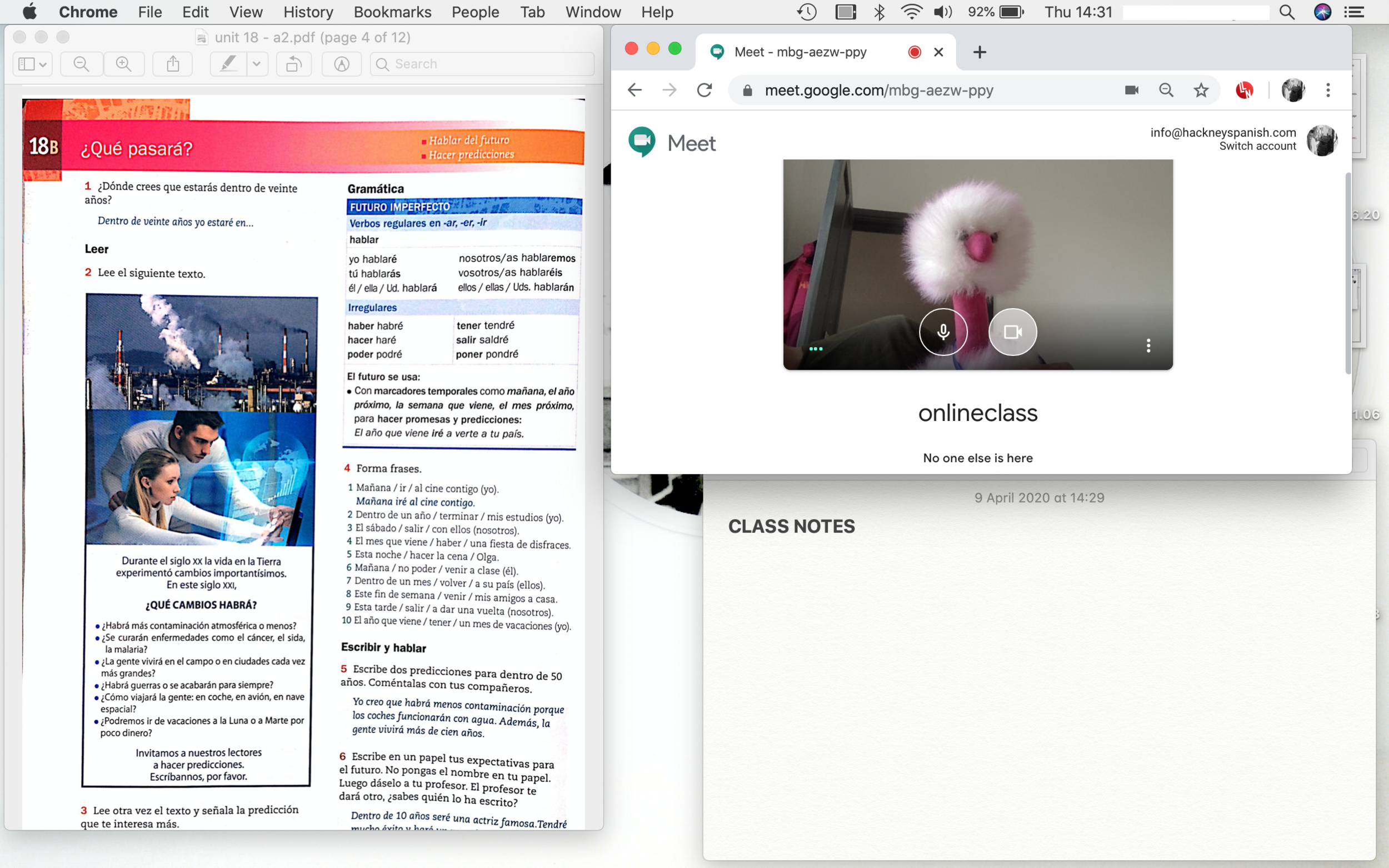Yes, listening is hard. But here are some tips that will help you get better at it.
Anyone who’s been learning Spanish for long enough will agree that listening is one of the hardest things. This is to do with many things: the speed of the language, the many accents, the many things a person might talk about, the fact not every speaker is a professional voice artist, etc. This problem is further exacerbated by bad teaching creating wrong expectations about listening. Many students are trained to listen in class, wasting a lot of time in the process, with very little gains. We believe this is the wrong way to go about it.
The moment of listening in class should not be seen as specifically training listening skills. We use that moment to introduce concepts in a practical way, and to see how your listening is progressing. Think about it like going to a tennis class: you’ll still have to play tennis outside of class to get good at it — no one would think the class alone is the moment in which you get good at your tennis, or that you’ll go to class and do a simulacrum of a game, as if you were playing with mates. Instead you will see the class as a moment of learning, and your instructor will use that time to correct your posture, and to suggest ways of improving your skills, perhaps to introduce a new trick, etc.
So, if the class is not really the moment of playing / listening, when do you play / listen? Well there are many things to do in your own time, and none of them need to be a chore. There are things that you can do actively; and there are things that don’t need your attention 100%.
Actively, in a nutshell, try to listen to podcasts, watch things on Netflix with subtitles, listen to people talking and try to spot words, expressions, etc. There are many exercises that we teach our students for them to listen actively and if you want to learn more about these please get in touch because after wall we are a school! That said, there are no limits to the things you can do with free materials available online. Be inventive and just go for it.
In terms of non-active learning there’s a lot to do too. This is very interesting, very simple, and rarely exploited by language tutors (spoiler: we do; but we are also the best around, so there’s that). In our classes we talk a lot about the concept of unconscious acquisition. If this is something of interest there’s an article here about what this means in depth. Basically, it means that there are things that happen when we learn, when we pick up the language without really trying; listening has a lot to do here, and we still don’t know how this works but we know it works, judging from how kids continue to learn their mother tongue: did you mum or dad sit you down and explained the subjunctive to you or did you just pick up the language from them? More likely the second option…
So we need to try to replicate that situation of someone learning their mother tongue. For that reason it’s important that you spend time in the language — there’s a post here for you to see what we mean by that. But to put it simply, one thing you can do is having a radio in Spanish in the background when you aren’t necessarily paying attention 100%. This will improve your listening and your overall language learning, through that unconscious acquisition. We see this all the time — our students who do this learn much faster than the ones who do no! (We would have to say that they also learn faster and better than in other schools but that’s something for another post!).
So, yes, do some proper work with podcasts, etc, or get in touch with us and follow our method to go about this. But also, next time you are doing exercise or cooking, just blast a Spanish radio station instead of the latest Coldplay (yawns in Spanish). You’ll be taking a lot in without even noticing it!
FREE ONLINE RESOURCES:
Good podcasts: Radio Ambulante (www.radioambulante.org), El Hilo (http://elhilo.audio), Sobremesa, a podcast by Memrise (https://memrise.libsyn.com), Duolingo Podcast (https://podcast.duolingo.com/spanish).
A good place to find radios in Spanish: http://www.radio.garden.
Lots of news in Spanish: BBC Mundo (https://www.bbc.com/mundo)
And there’s a lot more online!


